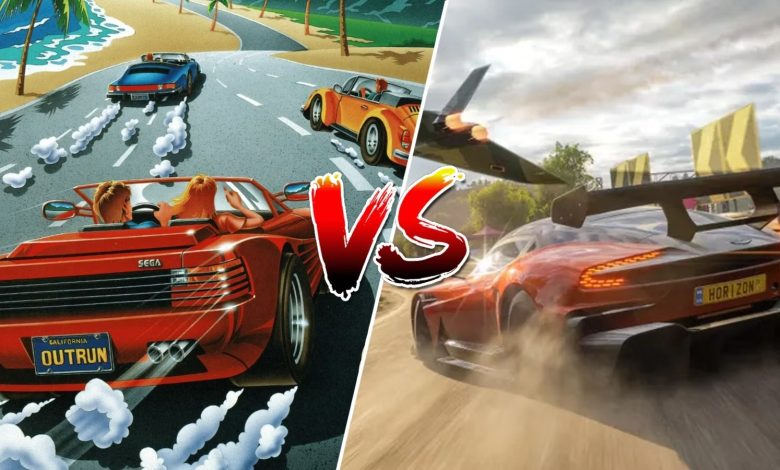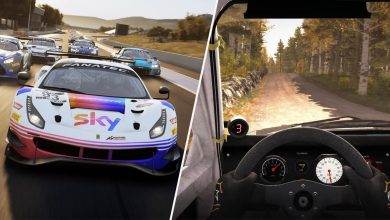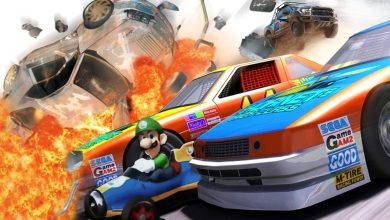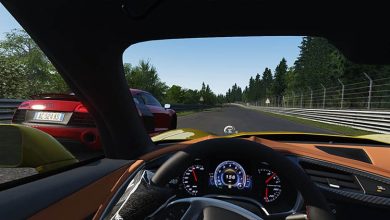The Evolution of Racing Games: From Arcade Classics to Modern Masterpieces

The evolution of racing games has been a fascinating journey from the early days of arcade classics to the modern masterpieces that we have today. In the early days of video gaming, racing games were simple affairs with basic graphics and gameplay. However, over the years, racing games have evolved to become one of the most popular and entertaining genres in the video game industry.
The first racing game to appear in arcades was “Speed Race” in 1974. This game was very simple, with players controlling a car that raced down a straight road and had to avoid other vehicles. Despite its simplicity, “Speed Race” was an instant hit and paved the way for other racing games to follow.
One of the most influential racing games of the early days was “Pole Position” released in 1982. This game was more advanced than “Speed Race” and was the first racing game to feature a rearview mirror and a track based on a real-life racing circuit. “Pole Position” was an instant hit and became one of the most popular arcade games of its time.
As home gaming systems became more advanced, racing games made the transition from the arcades to the living room. The first racing game to appear on a home gaming system was “Night Driver” for the Atari 2600 in 1976. However, it was not until the release of the Nintendo Entertainment System (NES) in 1985 that racing games truly took off as a genre. Games like “R.C. Pro-Am” and “Excitebike” became huge hits and set the stage for the future of racing games.
The 1990s saw the rise of 3D graphics and the introduction of the first true 3D racing games. “Sega Rally Championship” was one of the first games to feature true 3D graphics and was released in arcades in 1995. This game was a huge hit and was soon followed by other 3D racing games, including “Need for Speed” and “Gran Turismo.”
As the technology for home gaming systems improved, racing games continued to evolve. The release of the PlayStation 2 in 2000 was a major turning point for racing games. The improved graphics and processing power of the PS2 allowed for more realistic and immersive racing games. Games like “Gran Turismo 3: A-Spec” and “Project Gotham Racing” set new standards for the genre and became some of the best-selling games of all time.
The rise of online gaming in the late 1990s and early 2000s was another major turning point for racing games. Games like “Need for Speed: Hot Pursuit 2” and “Midnight Club 2” allowed players to race against each other online, making the racing experience even more exciting. The introduction of online gaming also allowed for the creation of virtual racing communities, where players could compete against each other in races and tournaments.
The introduction of motion controls in the late 2000s marked another major turning point for racing games. Games like “Mario Kart Wii” and “F1 2009” allowed players to control their vehicles using physical gestures, making the racing experience even more immersive. These games were huge hits and demonstrated the potential for motion controls in racing games.
Today, racing games continue to evolve and push the boundaries of what is possible in the genre. The latest games in the “Gran Turismo” and “Forza Motorsport” series feature incredibly detailed graphics and realistic physics, making them some of the most immersive racing games ever made. Additionally, the rise of cloud gaming and streaming services has made racing games more accessible than ever, allowing players to play high-quality racing games on their phones and other mobile devices.
In conclusion, the evolution of racing games has been a fascinating journey from the early days of arcade classics to the modern masterpieces we have today. From basic graphics and gameplay in the early days to the realistic and immersive experiences of today, racing games have come a long way. The introduction of online gaming, motion controls, and the rise of cloud gaming and streaming services have all played a major role in this evolution.




